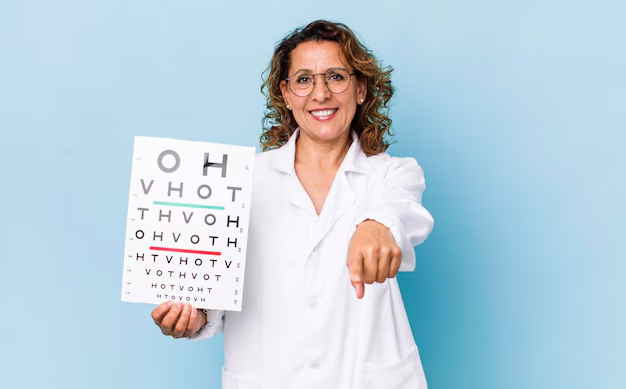Understanding Cataracts in the Eye: What You Need to Know
Cataracts are a common eye condition that affects millions of people worldwide, especially as they age. But what exactly are cataracts, and how do they impact vision? In this comprehensive guide, we'll explore the ins and outs of cataracts, offering insights into what causes them, how they are diagnosed, and possible treatment options. Whether you're dealing with cataracts yourself, know someone who is, or are simply interested in eye health, this article provides valuable information in an easily digestible way.
🌟 What Are Cataracts?
Cataracts refer to the clouding of the lens in the eye, which leads to a decrease in vision clarity. This condition occurs when proteins in the lens break down and cause cloudy areas that interfere with the light passing through to the retina.
Causes and Risk Factors
Understanding the causes and risk factors of cataracts can help in recognizing the early signs. Here are some of the primary factors:
- Aging: The most common cause, cataracts develop naturally as part of the aging process.
- Genetics: A family history can increase the likelihood of developing cataracts.
- Medical Conditions: Diseases like diabetes may increase cataract risk.
- Lifestyle Factors: Smoking, excessive alcohol consumption, and prolonged UV exposure can contribute.
- Medications: Long-term use of certain medications, like corticosteroids, may lead to cataract formation.
Types of Cataracts
Cataracts can be categorized into several types, each with unique characteristics:
- Nuclear Cataracts: Common with aging, these form in the center of the lens.
- Cortical Cataracts: These develop in the lens cortex, characterized by wedge-like opacities.
- Posterior Subcapsular Cataracts: These form at the back of the lens, often progressing rapidly.
- Congenital Cataracts: Present at birth or developing in childhood, they often stem from genetic factors.
👀 Symptoms to Watch For
Recognizing cataract symptoms early can lead to timely intervention and better management. Some common symptoms include:
- Blurry or Dim Vision: Often described as looking through a foggy window.
- Difficulty with Night Vision: Increased difficulty in low-light conditions.
- Sensitivity to Light and Glare: Bright lights can become overwhelming.
- Fading or Yellowing of Colors: Colors may appear less vibrant.
- Double Vision in One Eye: Seeing duplicate images becomes a problem.
When to Consult a Doctor
If you notice these symptoms persisting, it’s essential to consult an eye care professional. Routine eye exams are crucial for early detection and management.
🔍 Diagnosis and Evaluation
Diagnosis of cataracts involves a comprehensive eye examination. Here’s what typically happens during an evaluation:
- Visual Acuity Test: Measures the ability to read a series of letters or symbols from a distance.
- Dilated Eye Exam: Involves using drops to widen the pupils, allowing the doctor to examine the retina and lens more thoroughly.
- Slit-lamp Examination: Offers a magnified view of the eye to detect abnormalities.
⚖️ Treatment Options
Treatment for cataracts depends on the severity and the impact on daily life. Here are some options:
Non-Surgical Interventions
- Vision Aids: Stronger eyeglasses, bifocals, or magnifying lenses may help initially.
- Lifestyle Adjustments: Improving lighting and managing glare can alleviate minor symptoms.
Surgical Procedures
When cataracts significantly interfere with vision and daily activities, surgery may be recommended. Cataract surgery is one of the most common and effective procedures. There are different surgical techniques:
- Phacoemulsification: The most common method, using ultrasound waves to break up the lens for removal.
- Extracapsular Cataract Surgery: Involves removing the cloudy part of the lens in one piece.
Post-Surgery Considerations
Recovery from cataract surgery is usually quick, but it's essential to follow the doctor's care plan for optimal healing. This might include:
- Avoiding strenuous activities
- Using prescribed eye drops
- Protecting the eyes from bright lights
🔄 Lifestyle and Self-Care
Although cataracts are primarily associated with aging, adopting certain lifestyle habits can promote overall eye health:
- Wearing Sunglasses: Protect your eyes from UV rays whenever you’re outside.
- Healthy Diet: Foods rich in antioxidants, like leafy greens and fruits, contribute to eye health.
- Regular Eye Exams: Ensure any changes in vision are detected early.
Foods That Support Eye Health
Incorporating specific foods into your diet can support eye health:
- Leafy Greens: Spinach, kale, and collard greens are high in antioxidants.
- Fish: Rich in omega-3 fatty acids, fish like salmon and tuna benefit eye health.
- Nuts and Seeds: Packed with vitamin E, which can help protect the eyes from oxidative stress.
🤔 Frequently Asked Questions About Cataracts
To provide additional clarity, here is a summary of frequently asked questions regarding cataracts:
Q: Are cataracts preventable?
A: While they can’t be entirely prevented, healthy lifestyle choices and regular eye exams can slow their progression.
Q: Is cataract surgery safe?
A: Cataract surgery is considered one of the safest surgeries, with high success rates. However, as with any surgery, there are potential risks, which should be discussed with an ophthalmologist.
Q: How long is recovery from cataract surgery?
A: Most patients notice improved vision within a few days, with full recovery typically taking a few weeks.
🌈 Summary of Key Points
Cataracts are a natural part of aging but can be managed effectively with the right approach. Here's a quick summary:
- 👴 Aging Factor: Aging remains the most common cause of cataracts.
- 📆 Routine Check-ups: Regular eye exams are crucial for early detection.
- 🕶️ Sun Protection: Wearing sunglasses can mitigate UV exposure risks.
- 🍽️ Nutrient-Rich Diet: A diet including greens, fish, and nuts supports eye health.
- ⚙️ Surgical Intervention: Cataract surgery is effective and safe for significant vision impairment.
By understanding what cataracts are and recognizing the symptoms and treatment options, you can take proactive steps in managing your eye health. Always consult with healthcare professionals for personalized advice and care.
Empowering yourself with knowledge about cataracts and their management can lead to better outcomes and a clearer vision for your future.
